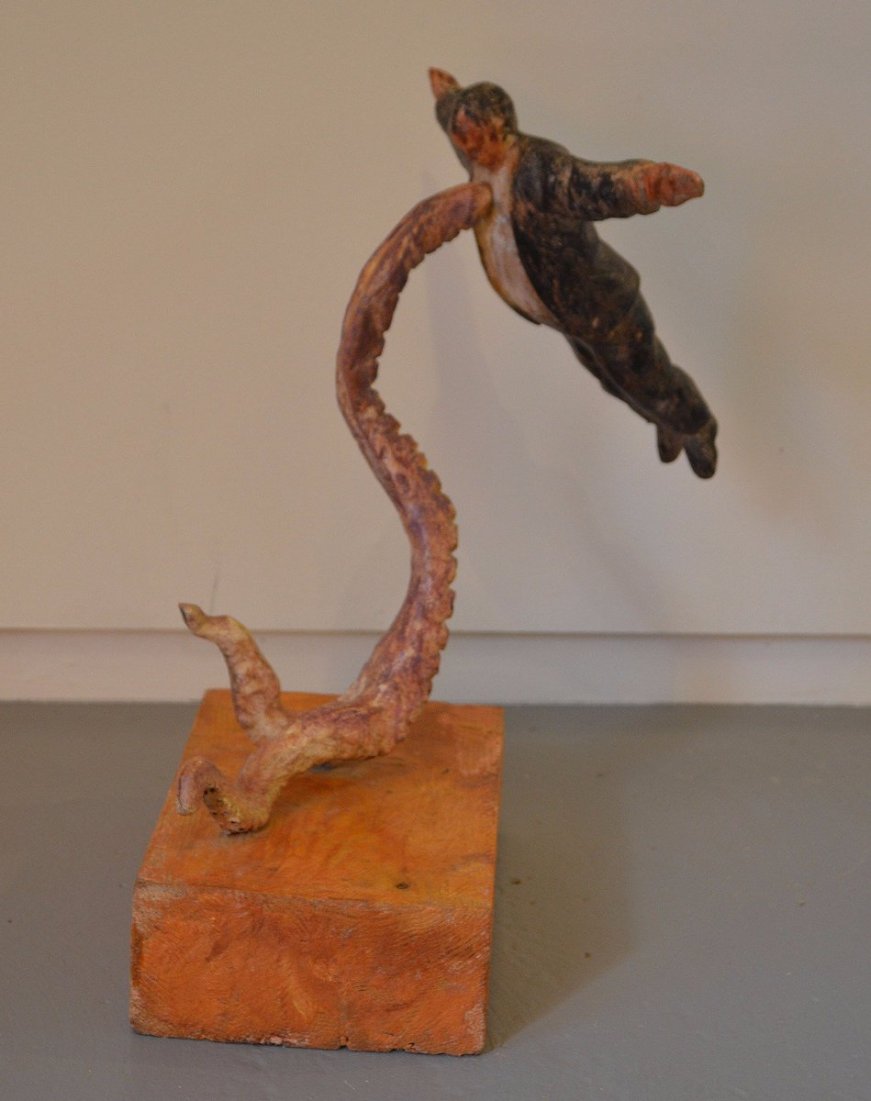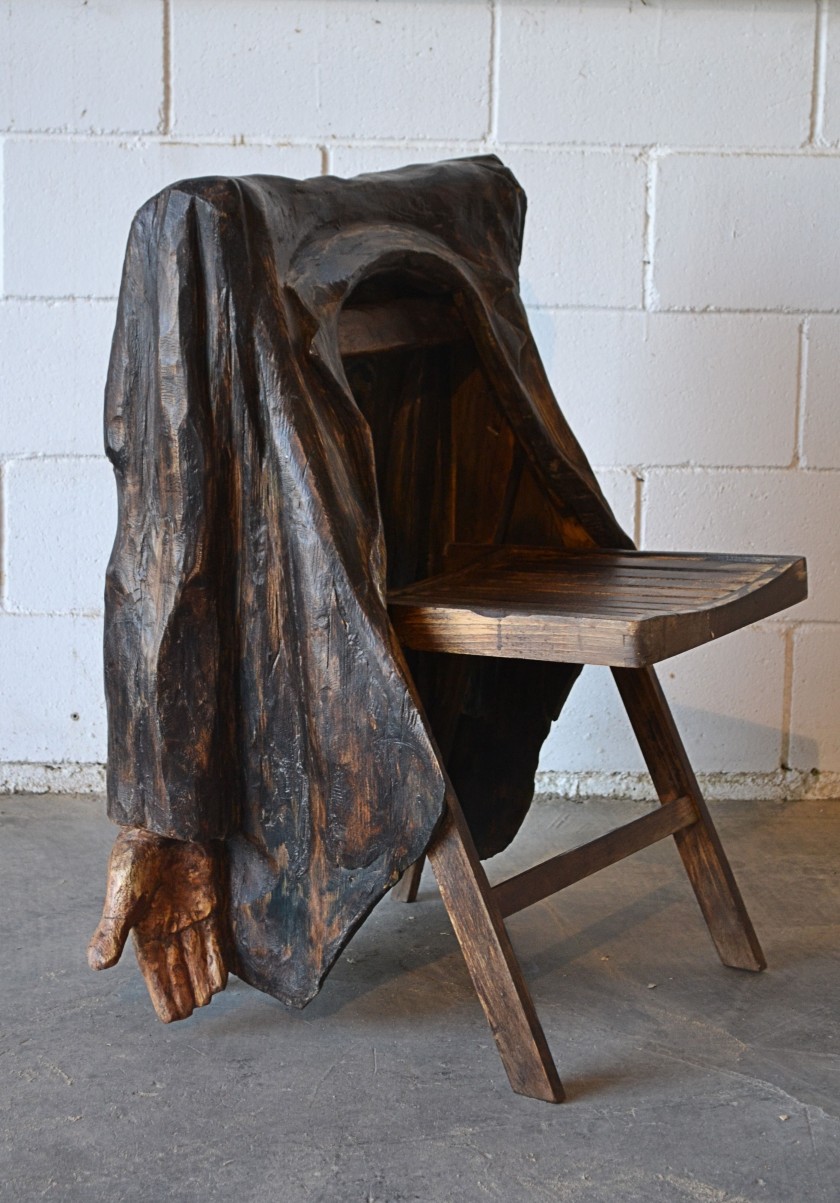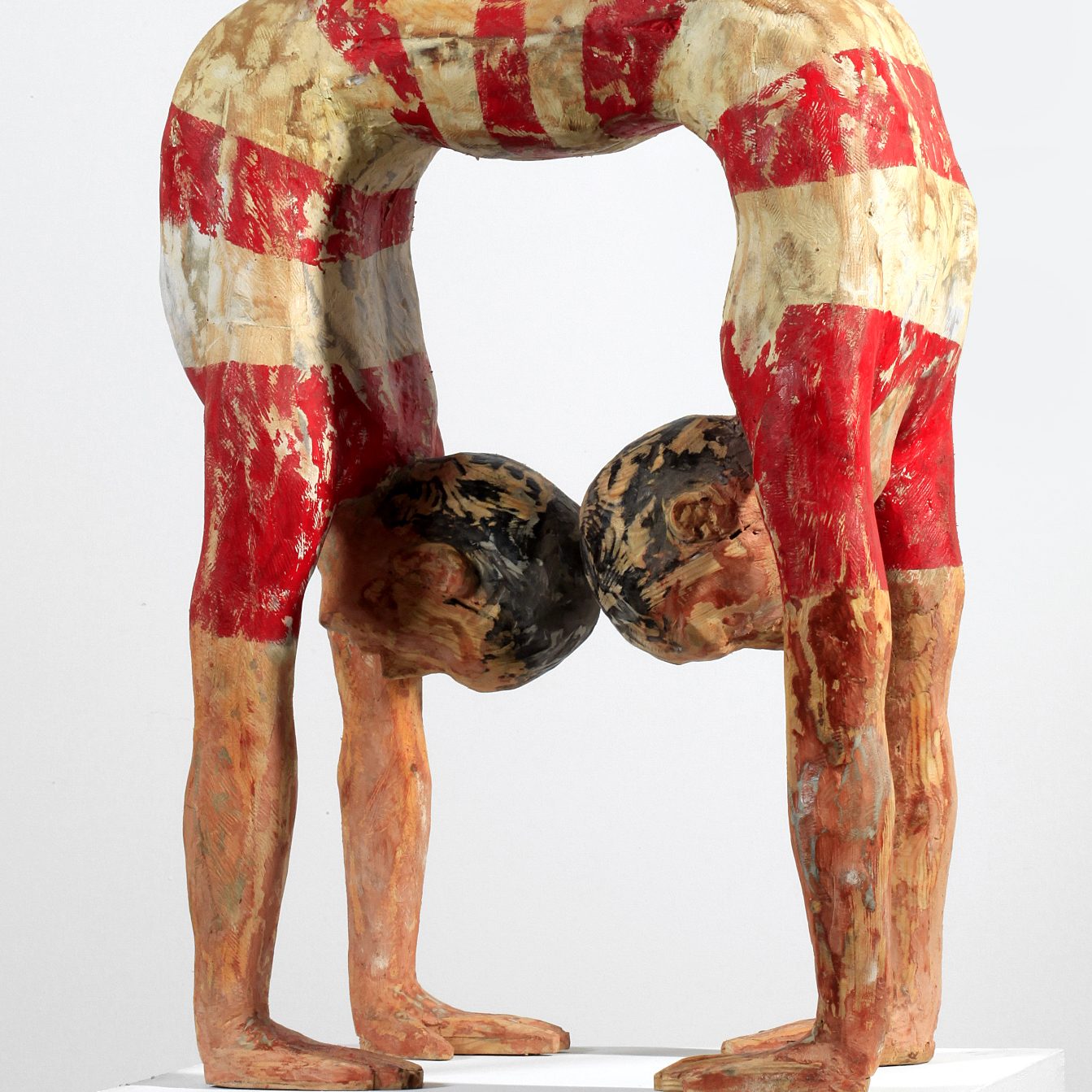Spanish sculptor Joan Priego is known for his surreal wooden works that manipulate the human body and play with philosophical and religious themes. His recurrent subjects include the tension between modernity and postmodernity, the effect of a fluctuating economy on the individual and the multi-faceted human identity.
Through his art, Joan—an alumnus of the Escola d’Arts i Oficis de la Diputació de Barcelona and the Universidad Nacional de Educación a Distancia, Madrid—displays a great awareness of cultural shifts and pressing social issues.
This past week, the artist elaborated on his vision…
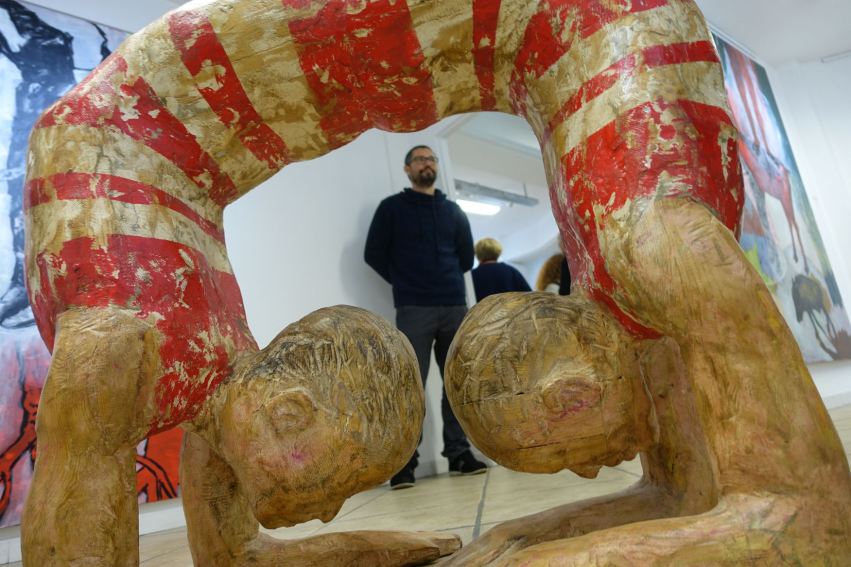
You have one of the most profound artist’s statements I have read till date. I must reproduce it here for the readers:
Since Nietzsche and Freud, “the Subject” is no longer a stable entity as it was for Kant or Hegel, but a multiplicity of masks. Our Postmodern subjectivity has become fragmented. This contemporary reflection about identity becomes the main topic in my work. My sculptures are carved out from pieces of wood; they pretend to be some kind of metaphor about today’s individual identities, fragmented and multiple. Like the contemporary concept of the Subject, they have been made up from the ruins of the project of Modernity. I also use recycled wood coming out from demolished old buildings for my works. What was the proud joist of a building becomes, in my art, just a part that helps in the construction of a splintered identity.
That is deep stuff. So basically what I gather is that you are somebody who is too aware of the distinction between “Modern” and “Postmodern” conditions. How do you define and differentiate between “Modernity” and “Postmodernity”—in the simplest sense possible? I have often heard Jean-François Lyotard’s explanation of modern philosophy basically being about grand, large-scale theories and postmodern philosophy essentially being about an “incredulity toward metanarratives” [La Condition postmoderne: Rapport sur le savoir (1979)]. That is, of course, just one of many, many opinions on the issue. I’d love if you could expand a little bit more on how you compare and contrast the two periods of thought…sweeping generalisations are okay!
Modernity believed that Human Reason could unravel the mysteries of the universe and find the Truth. Modern individuals decided that human history had a purpose and they built all these metanarratives to explain it (Marxism, positivist science, etc.). Within Modernity, one could believe that children would have a better life than their parents because society was always improving. Postmodernity doesn’t believe in progress, now we hear that millennials will really be the first generation to do worse than their parents. Besides, in Postmodernity, everything is called into question. It’s almost impossible to grasp the truth of the world, to attain certainty, to establish a foundation for philosophy, and/or produce a defensible philosophical system. Nihilism is all that remains.
But what I really think is that there was a metanarrative that accomplished its goal and we are living the consequences of it. I suppose we are experiencing the triumph of capitalism: it changed workers into consumers, desire entered into the logic of capitalism and capitalism won. Now we live in what they call Post-Fordist capitalism and that means precariousness, job insecurity, social inequality, social inequity, etc.
All in all, modern metanarratives promised a kind of utopia but we have ended up in postmodern dystopia.
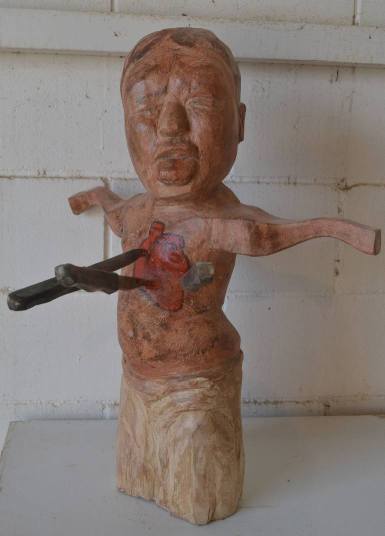
Are you critical of the concept of fragmented identity/multiple masks—do you see it as something negative and misleading and unnecessary? Or do you find the idea adventurous and rather true?
I believe we are all indeed fragmented and multiple, there is no “constant and stable Self” and I find the idea positive as long as you realise it and accept it. The problem comes when you think that only one particular mask is the whole, when you confuse reality with virtuality, “the Selfie” with “the Self”.
I read that you were pursuing a doctorate in aesthetics from the Universidad Nacional de Educación a Distancia, Madrid. What was your research all about?
I was researching the borders between art and political action—about Direct Action and protests as forms of art and art as a form of political action, in turn. But I got stuck in my thesis. The financial crisis was here, and I became unemployed. It was not easy for me to travel regularly to Madrid to meet my thesis director. I was discouraged so I quit. Maybe I’ll take the project up again in the near future.
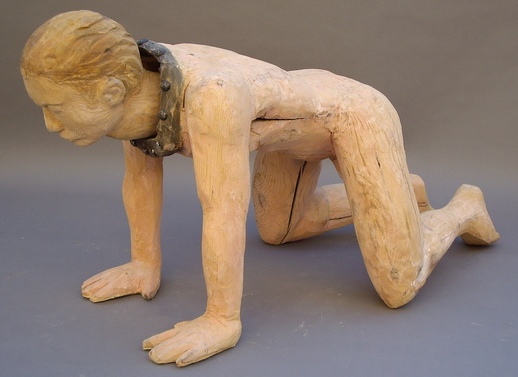
At which age or point in life did you become interested in philosophy and decide to make it your object of enquiry as an artist?
I wasn’t an early bird. When I was in my 20s, I considered myself a poet and was interested in having new experiences. I was 27 when I entered the Arts and Crafts school for sculpture in Barcelona and 32 when I started my studies of Philosophy at the University. The discipline has been an object of enquiry since then. I don’t write philosophical essays but try to put some of my thinking in my sculptures.
Which contemporary artists do you admire for their philosophical questioning?
There’s a great Spanish artist Abel Azcona—a young performer who regards the body as a medium for fight and social change. For one of his provocative performances, he attended Mass at many Catholic parishes and collected 242 sacred hosts, upon which he wrote the word “pederasty” in order to denounce the cases of child sex abuse in the church. He had to go to trial for that. Another Spanish artist I admire is Eugenio Merino. He’s a great hyperrealist sculptor with a deep sense of irony. He made a portrait of the dead Franco (the dictator) in a Coca-Cola fridge and he also had to go to trial for that. (The lack of freedom that we are suffering from in Spain lately is shocking.)
I also love the work of the Yes Men—they are more culture jamming activists than artists but I find them brilliant. The “Barbie Liberation Organization” prank of the culture jamming activist collective RTMark was totally sublime. Then, I admire Kiki Smith, the Chapman Brothers, Francisco Leiro, Juan Muñoz, Stephan Balkenhol, Robert Gober, Hans Bellmer, and many more…
You mentioned that your postmodern works are built upon the “ruins of modernity”. Is that the reason why they look worn-out, pale in colour, and sometimes even dirty?
Yes, I love the look of those old painted wooden doors where everything has worn out and you can see different layers among the wood grain. Ruins have a kind of romantic splendour and I want that for my sculptures.
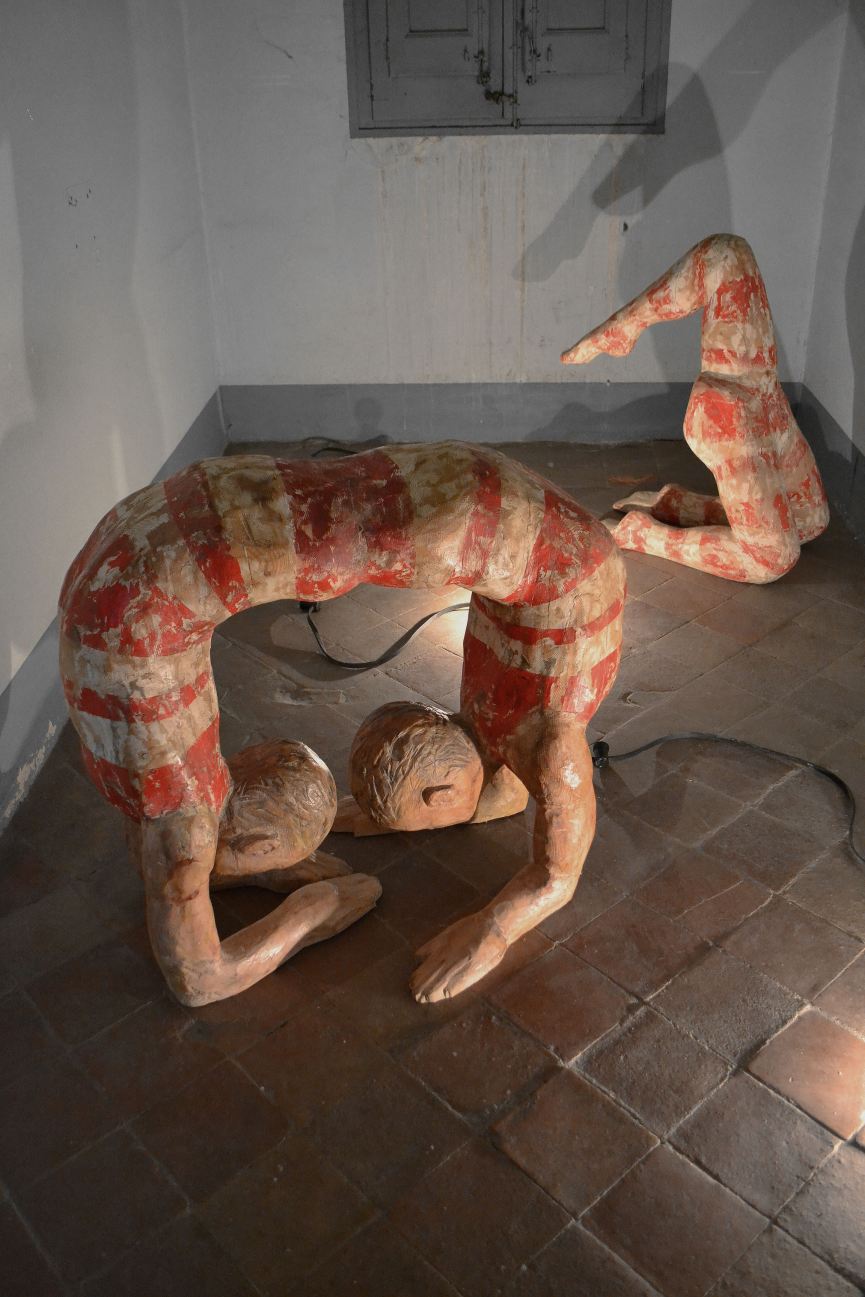
You have a few contortionists that also happen to be Siamese twins. One pair is without faces, another is missing legs. What deeper meanings do you wish to explore and convey through bent, twisted bodies and the element of duplication?
The contortionists and the Siamese twins are a critique on the contemporary labour market and mode of production. The philosopher and semiologist Paolo Virno says that the characteristics of the virtuoso performer—pianist, dancer, actor—such as improvisation and communication are nowadays the foundation of the intellectual mass work. A new kind of employment that is structured like a public sphere where all of us, as workers, are continuously exposed to the presence and the look of the Other. The mode of production of Post-Fordist capitalism has become a sort of virtuosic performance that no longer produces valuables as a result.
Moreover, the labour market grows more and more precarious everyday with high unemployment rates. The workers are required to be flexible, to reinvent themselves, to be in constant training. That is why I think that the figure of the contortionist has become the paradigm—among all performers—of the new social precariat. As contortionists, we twist and turn, following the requirements of the market. As Siamese contortionists our intellectual work faces us to the look of the Other, that is just another Self, twisting and mixing with us in our everyday pirouette for survival. As fragmented contortionists, we develop new skills and we remove our useless organs under this insane demand of flexibility, reinvention and constant training.
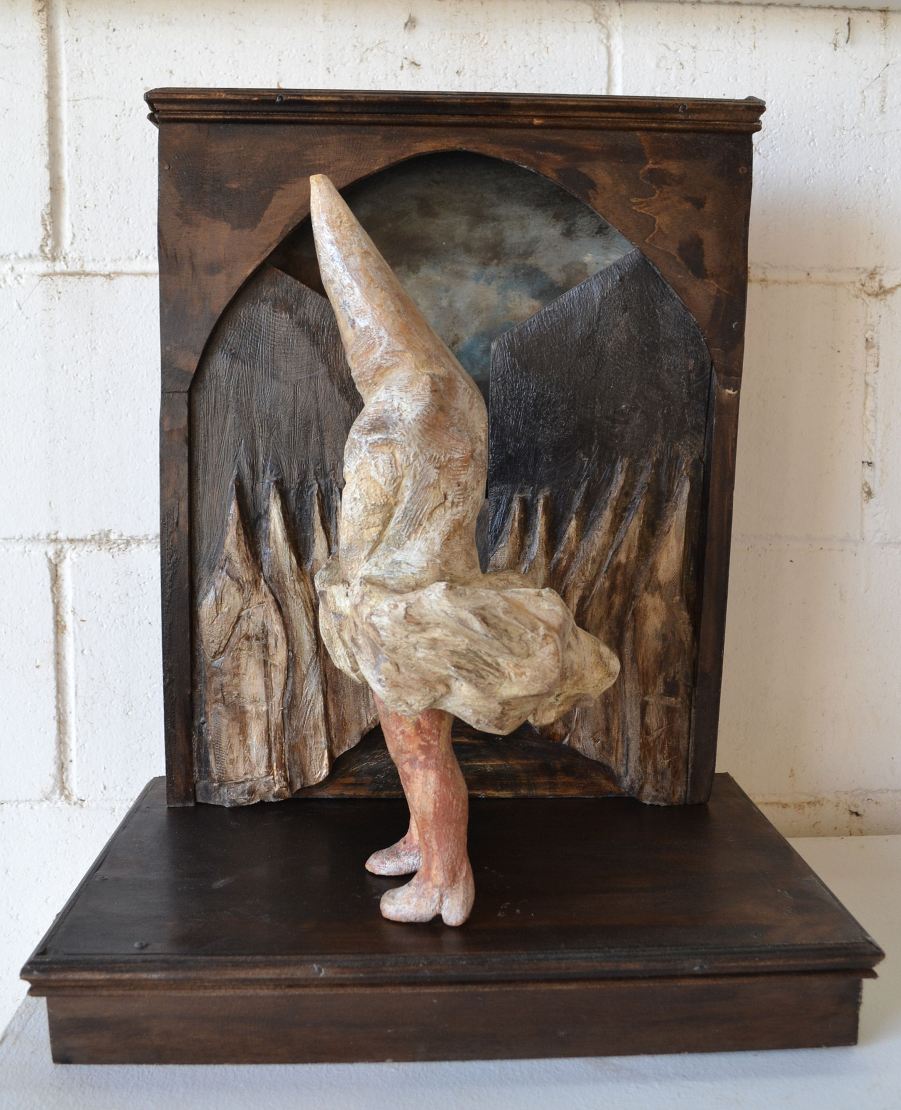
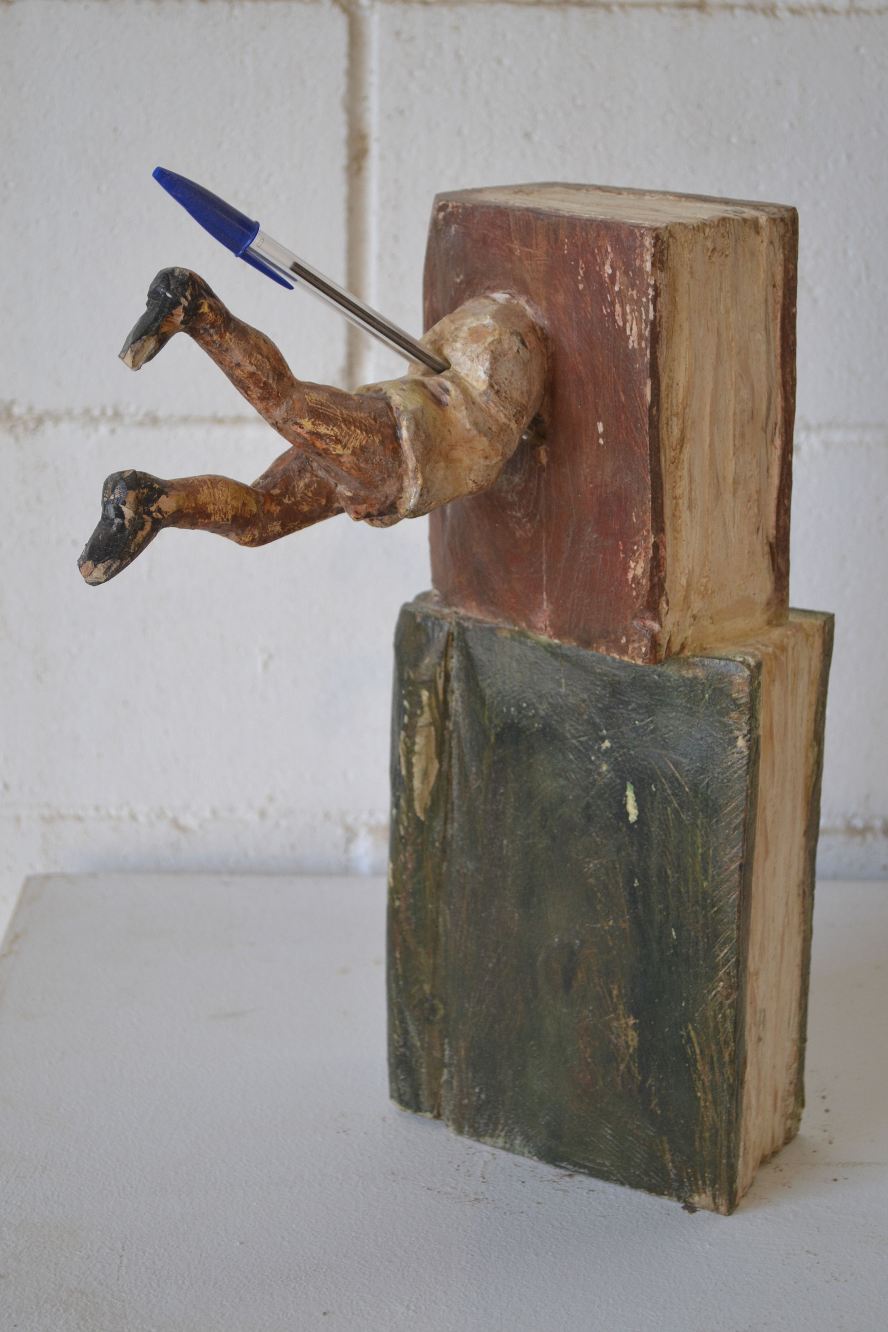
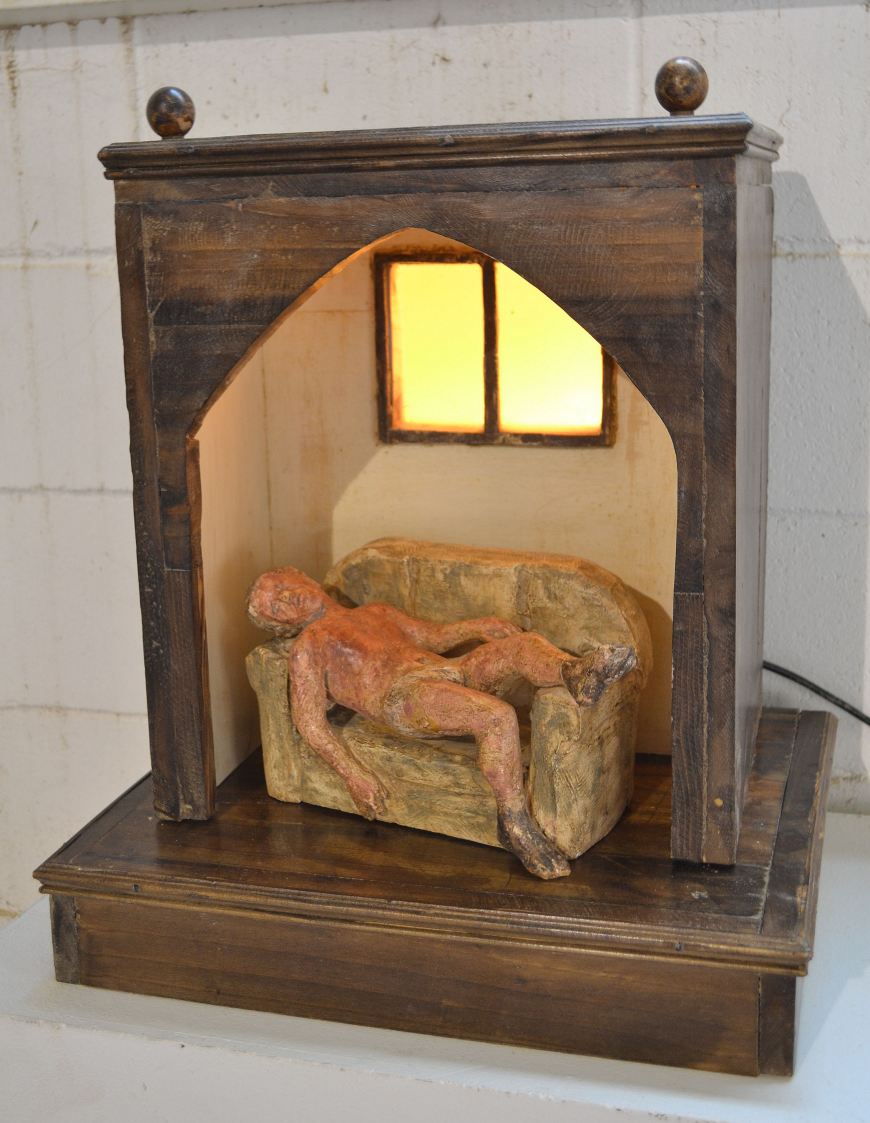
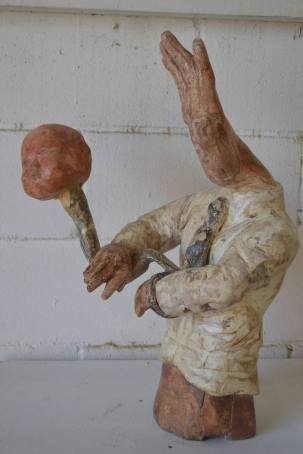
There are plenty of curious works inspired by religious figurines—Nazareno, Ecce Homo, Sebastian Flies, Pietà. Tell us more about how you play with or distort the original significance of these themes in your context…
The Spanish religious wooden sculpture is one of my main influences. And I like to play with and distort its original meaning to depict a contemporary understanding. As the Neoliberal philosophy uses and perverts the Judeo-Christian moral, I use and pervert Catholic imagery, carving and sculptures. Through irony, humour and absurdity, these figures help us to think about our place in the present-day social machinery.
Our Judeo-Christian moral teaches us that Original Sin is indelible and part of human nature. This internalisation of Sin, this universalisation of Blame is used in a perverse way by our Neoliberal capitalist system—it encourages job instability and can lead to a high unemployment rate; but it also holds the individual accountable for this precariousness. It’s the individual’s fault to be unemployed or to be a contingent worker because “to be successful you have to try hard”, which means that if you are unemployed it is because you haven’t tried hard enough. It is this emotion, this loss of confidence, that I have attempted to present in some of my pieces.
The Merman is unsightly, strange and with that, very funny. Where did you get the inspiration for this?
I wanted to make a hybrid—half-human half-animal—but with the useless part of each species, the brain of the fish and the human legs, just to make it look ridiculous and contradictory. However, the sculpture also has the strong sexual form of a phallic symbol.
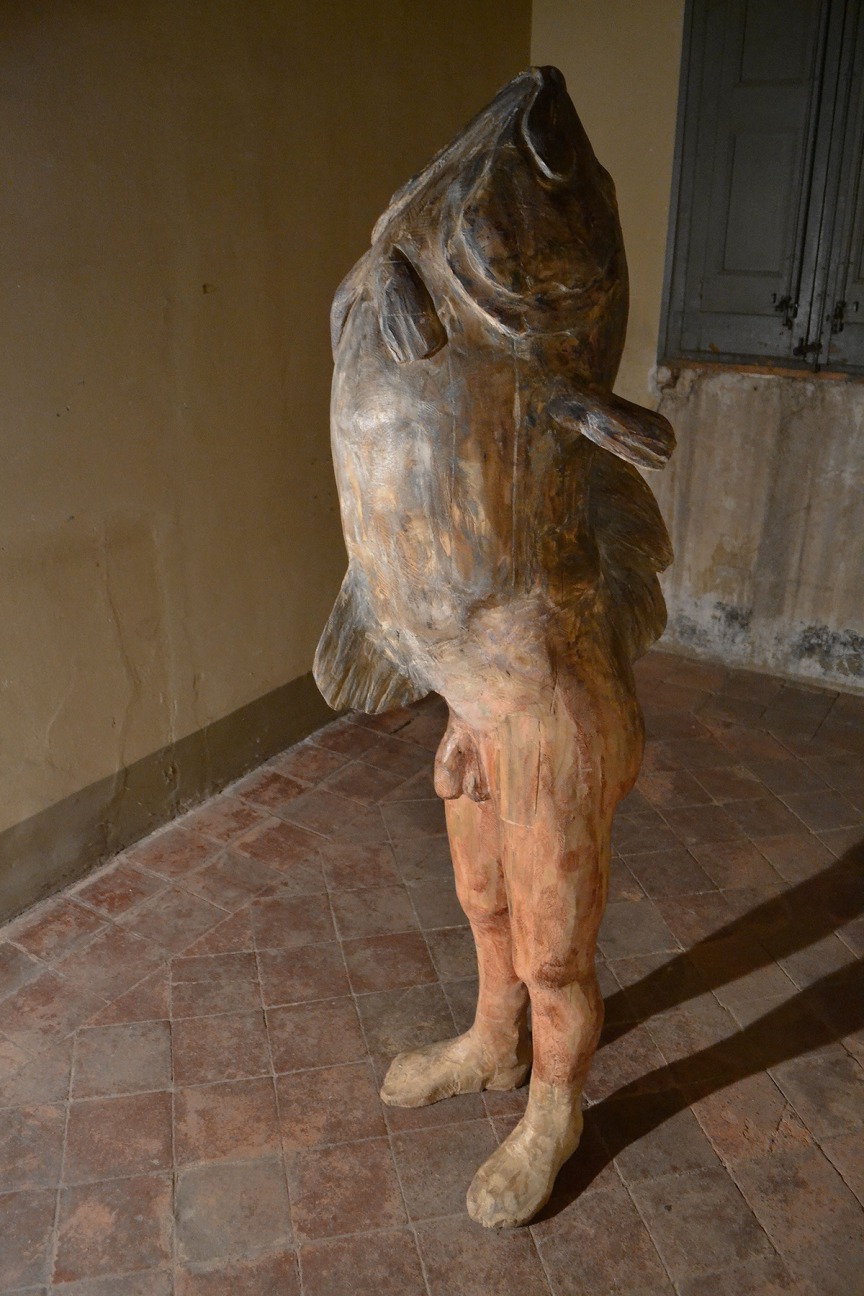
The bodies you create are almost always up to something surreal. A neck turns into a long tube and its head falls down to the ground, a torso goes in and comes out of a white wall. What does this trait of elongation and flexibility stand for? Is it related to some kind of sociological or psychological observation you have made about the postmodern way of life?
Just like the contortionists, these twisted bodies are a metaphor of the contemporary man in the labour market under a permanent request for flexibility, reinvention and constant training.
I noticed that no sculpture of yours has confident eyes staring at the viewer. Does the loss of vision refer to a disintegration of personhood, a decaying of the integrity of the soul?
Yes, just like Monday morning rush hours in the underground, where nobody wants to make eye contact with their neighbour—a sign of the atomisation and fragmentation of our society.
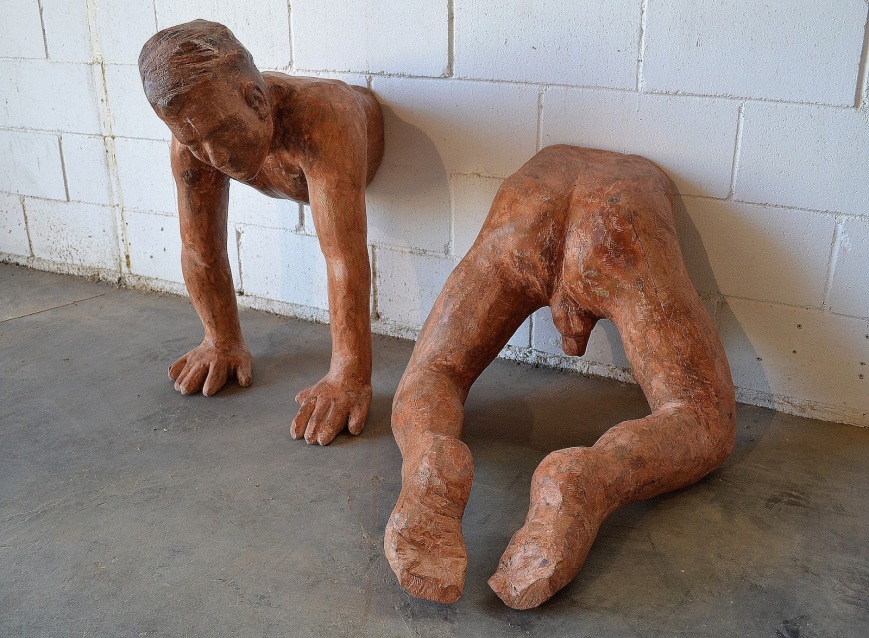
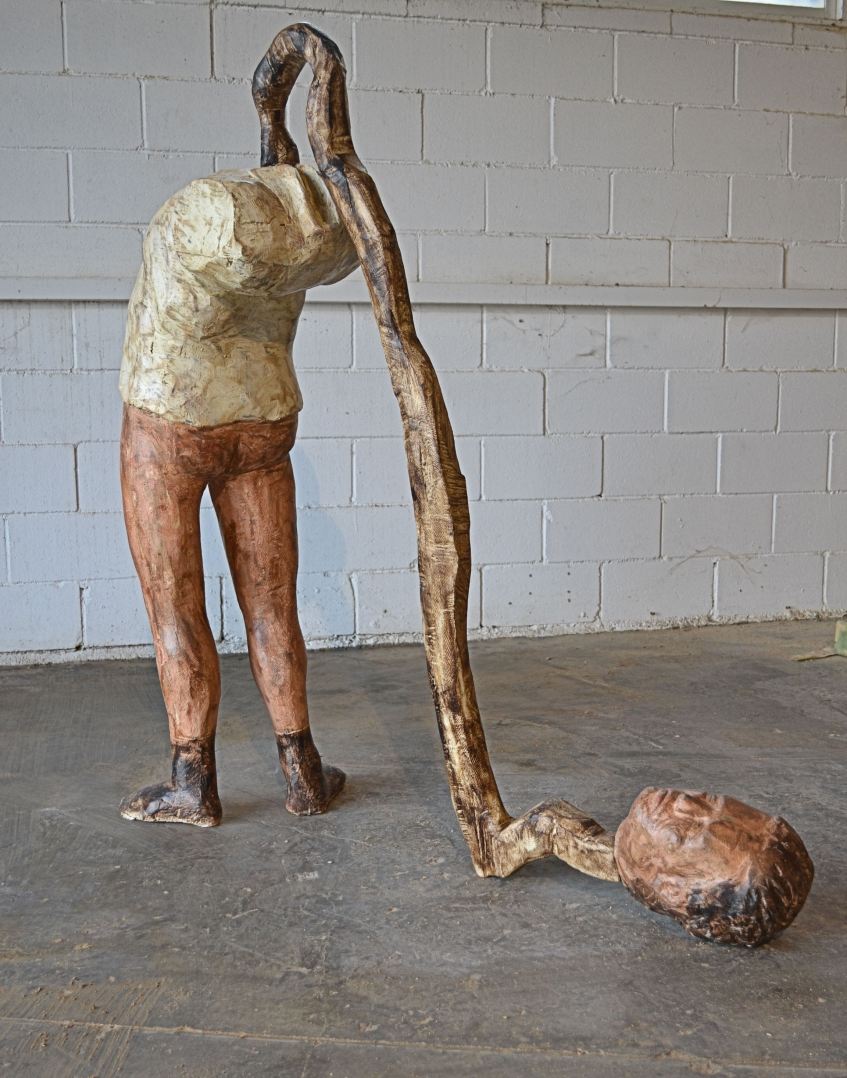
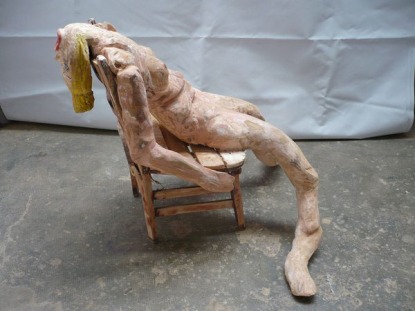
Do you turn to art forms other than yours for stimulation—painting, film, music, literature, architecture? If yes, tell us some of your favourites.
I love going into museums and galleries for good art (no matter if painting, sculpture, photography…). I also used to go to the theatre often. I go to concerts and listen to music (mostly blues, punk-blues, garage, psychobilly, classic R&R). I’m a fan of comics and old classic Sci-Fi and horror movies, but I also enjoy poetry, high literature and brainy movies.
Which designs will you be experimenting with this year?
I’m going to make a life-size version of my Nazareno and a documentary film will be made on the process. Furthermore, I want to speak about violence. I’ll be creating a collection of fighting figurines inspired by Francis Bacon’s paintings.
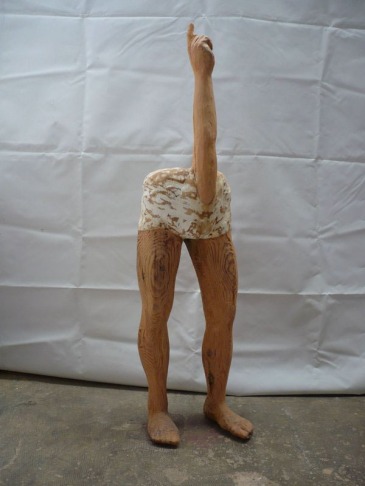
Does the city where you are based right now—Barcelona—affect your thought process and creativity? Does it influence you considerably?
Barcelona is a great city to live in. We have favourable weather, sea, good food but we also have more job insecurity, social inequality and higher unemployment rates than in the rest of Europe and all this has affected my work and my artistic discourse. Besides, in Barcelona we are at the periphery of the European art market and to try to survive as an emerging artist is a titanic struggle.
If you could change or improve something about Postmodernity, what would it be? This could be anything at all—the manner of education, the outlook of people, the work habits, the relationship trends, the power structures, the choice of occupations, fashions, economic and political ideologies and agendas…
I would certainly try to change the issues that I have already mentioned…social inequality, job insecurity, precariousness…and the contraction and deterioration of freedom.
Find Joan Priego on his blog (joanpriego.blogspot.com), LinkedIn (www.linkedin.com/in/joan-priego-garcia-04822442), Saatchi Art (www.saatchiart.com/joanpriego), Behance (www.behance.net/joanpriego) and Twitter pages (@jpriego).
